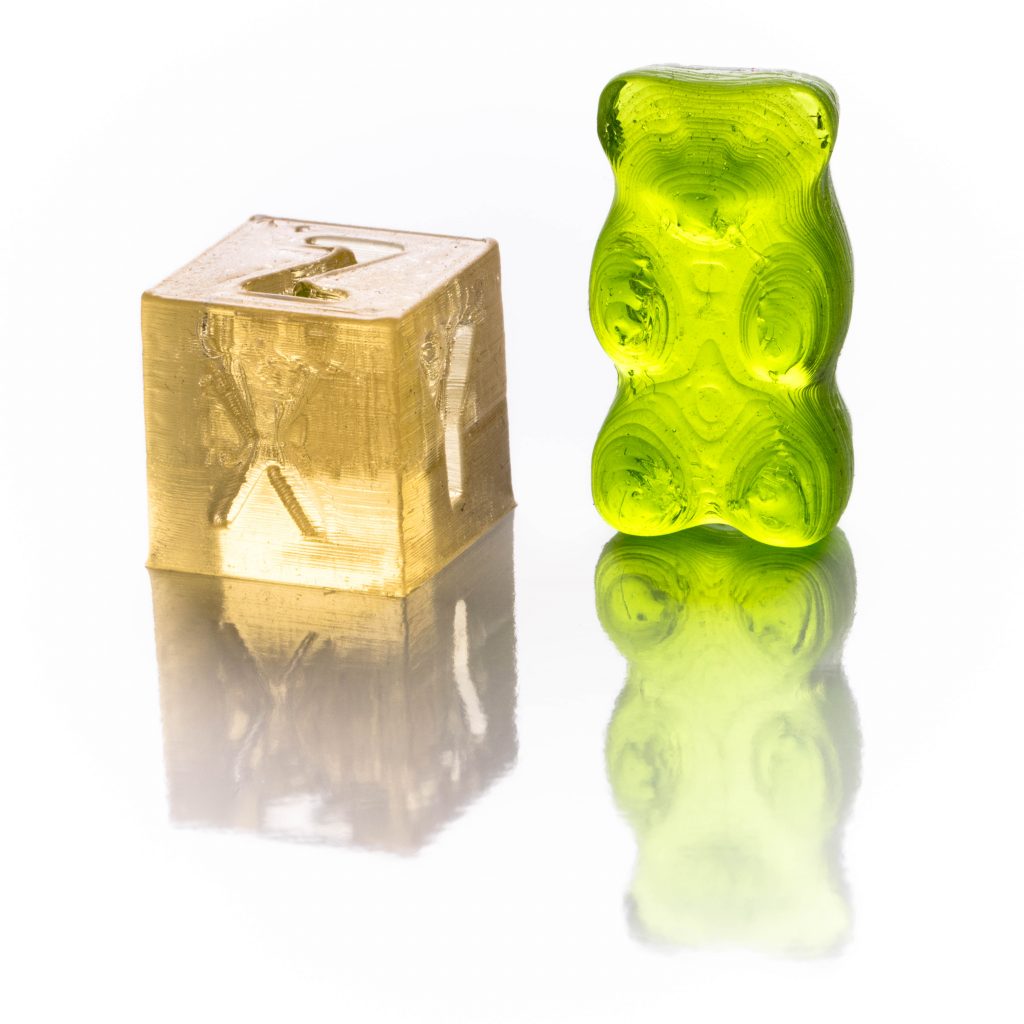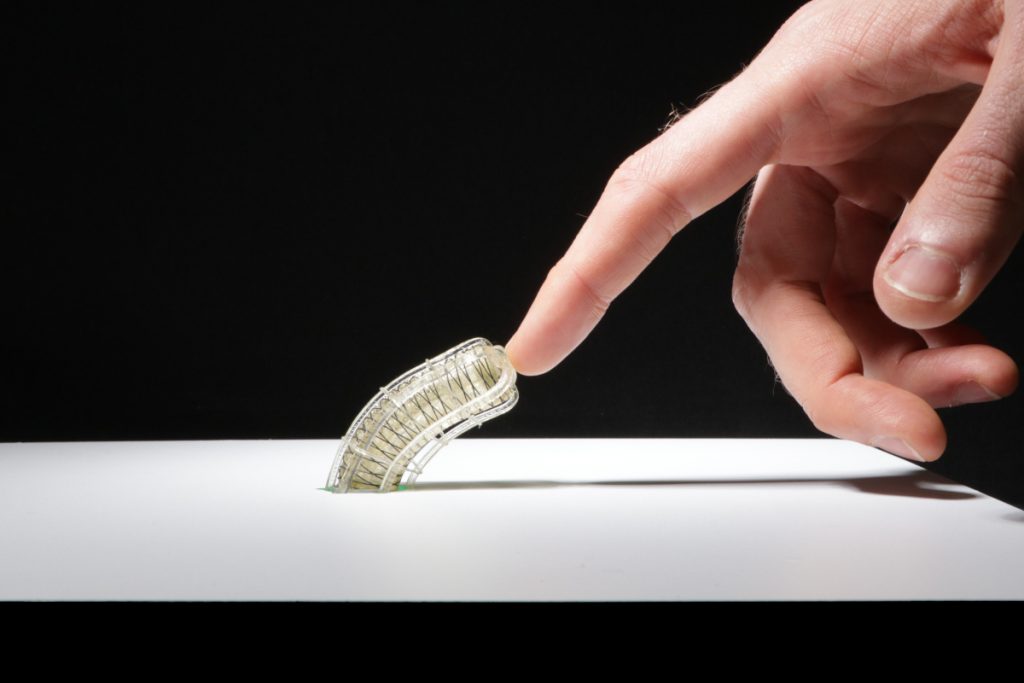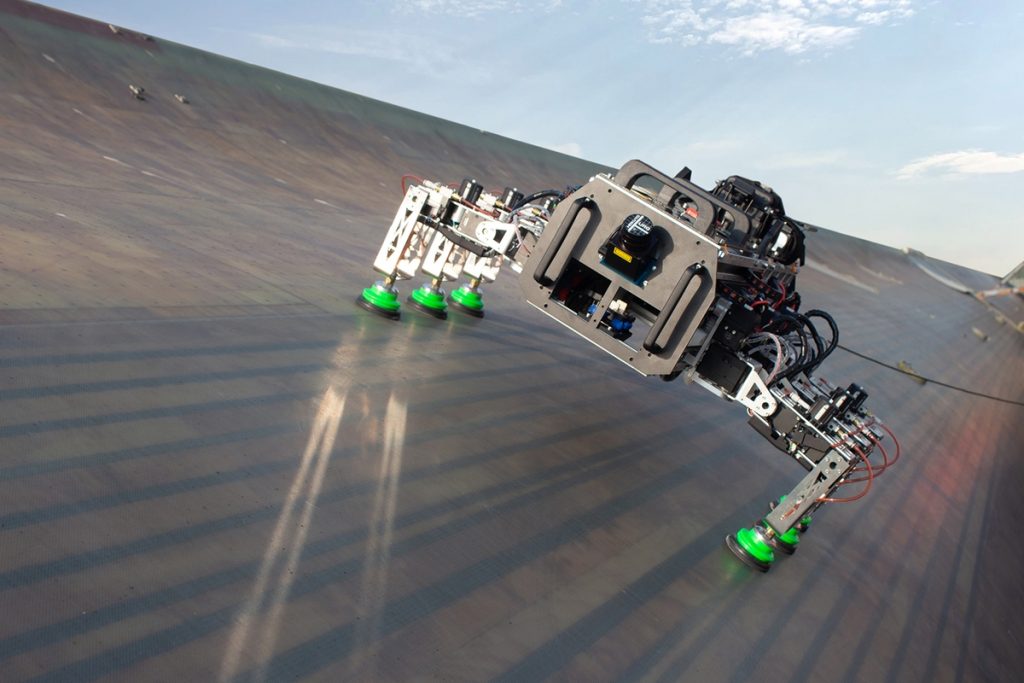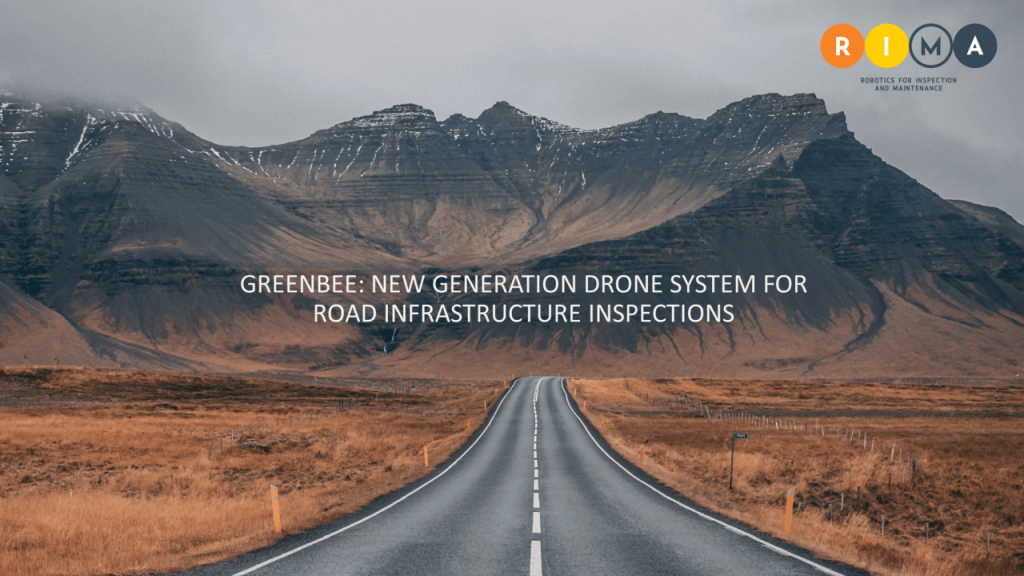Afreez Gan: Open Source Robot Dog, Kickstarter, and Home Robots | Sense Think Act Podcast #18

In this episode, Audrow Nash speaks to Afreez Gan, who is the founder and CEO of MangDang; MangDang is a Chinese startup that makes Minipupper, an open source robot dog that uses the Robot Operating System (ROS). Minipupper was inspired by and built with lessons learned from the Stanford Pupper, an open source robot dog. In this interview, Afreez speaks about Minipupper’s hardware, software, and documentation, about manufacturing Minipupper, and about his eventual goal of building a home robot dog.
Episode Links
- Download the episode
- Afreez’s LinkedIn
- MangDang’s website
- Minipupper’s Kickstarter
- MangDang’s Github
Podcast info
How Does the "Goods-To-Person" Method Improve Warehouse Efficiency?
GelBot – A new 3D printing method to tackle sustainability in soft robots

3D-printed vase deformed by human finger touch.
Future generations of robots will work very differently from those that assemble entire vehicles or solder electronics onto circuit boards at lightning speed on factory floors today. They will leave the factory halls and start working with people, handing them a tool at the right moment or assisting them in assembling heavy components. They will appear in agriculture, helping harvest the fields or process the fruits. And they will increasingly be found in living rooms, supporting and entertaining people there or simply making them feel less alone.
Of course, these robots will also look different from the enormous metallic contraptions found in today’s industrial plants. Their appearance will change along with their new functions. Whenever they come into contact with people, they will be gentle and soft so that they won’t hurt anyone – and “soft” here actually means that they are made of conformable materials; that their surface is elastic, flexible and stretchable. Of course, at the same time they are equipped with comprehensive sensor technology that immediately registers every touch and every approach, in order to be able to react appropriately. Today, the development of these soft electronics and robotics mostly relies on synthetic materials such as silicone elastomers – a rubber with very good elastic properties but of fossil origin. This also means that if soft robots become as omnipresent in the future as smartphones are today, the tech-waste grows substantially once again. This raises the question: Where are the biodegradable alternatives? And if they exist, how can we make truly empowering robots that move, sense, and react to their environment?
Martin Kaltenbrunner, head of the Soft Materials Laboratory at the Johannes Kepler University in Linz, Austria, investigates such sustainable alternatives for our future technologies. His team focuses on technologies that interface the human body and, therefore, are equally soft and conformable. Wearable electronics, stretchable energy supplies, and biomimetic robots are just a few examples. And by addressing sustainability, his team adds a new twist to these soft technologies.
The scientific breakthrough was achieved in 2020, when Kaltenbrunner and his team discovered a frugal way to make biodegradable gels (biogels) extremely resilient and durable but still vanish when disposed. Based on the abundant biopolymer gelatin, their material had similar properties and performance than the non-degradable silicone rubbers, paving the way for its use in soft robots.
Now, the doctoral students Andreas Heiden and David Preninger have built a system to 3D print this biogel into complex shapes. They have printed finger-like robots that use intricate sensor networks to sense their own deformation and also objects in their surroundings. Together with Florian Hartmann, materials engineer at EPFL, they have published their research in the renowned journal Science Robotics.
Nature as a source of inspiration
Soft robotics greatly benefits from nature as a source of inspiration, introducing innate means of safe interaction between robotic appliances and living organisms. Kaltenbrunner soon realized that despite soft robotics being largely inspired by nature, an inherent “feature” of nature’s creations was missing: biodegradability. Once a soft robot has reached its end-of-life, there is often no simple solution to recycle its components or treating waste in an environmentally friendly manner.
Introducing biodegradable materials to soft robotics seems to be the logical solution, but existing materials were just not durable enough or were difficult to process. Kaltenbrunner and his team were driven to engineer bioderived materials such as gels based on the biopolymer gelatin, that can match the performance of conventional synthetic elastomers, yet degrade fully after their intended use – leaving essentially no trace of having existed. About two years ago, published in the journal Nature Materials, they optimized such gels to be of use in on-skin electronics, and for soft robots. Based on naturally occurring materials as degradable building blocks that are durable, it is a broadly applicable gelatin-based biogel that unites the challenging needs of resilient yet sustainable (soft) robots in a single platform. It is highly stretchable and elastic—and its thermoplastic. An attribute that lets the material melt when heated and makes it perfectly suitable for 3D-printing.
Complex shapes through 3D printing
The deformable structure of soft robots poses challenges in fabrication and assembly. Unlike conventional robots that are screwed together from individual parts, soft robots are manufactured as monolithic blocks. To this end, 3D printing is a versatile fabrication strategy that also allows to produce complex objects. Heiden and Preninger designed a custom system based on Fused Deposition Modeling (FDM) to print their biogel. FDM is one of the most common 3d printing methods nowadays and based on fusing melted polymers that become solid again when cooled. For printing the biogel, the material is melted in a medical syringe and squeezed through the tip, which leads to to the deposition of a biogel “thread” that solidifies quickly after the extrusion. In this manner several two-dimensional layers are drawn subsequently, stacked on each other, to form the three-dimensional object.

XYZ calibration cube and gummybear model printed from gelatin-based biogel ink.
But what happens if a print fails? Usually, you would throw away your print and restart. Having a biodegradable solution, you do not even have to worry about waste production. Alongside this eco-friendly fabrication approach using biodegradable materials, we introduced an additional reuse cycle where the biogel is reprinted up to 5 times, maintaining more than 70% of the initial performance metrics. Utilizing such approaches for a circular economy will enable more sustainable solutions for materials that are less degradable.
Omnidirectional actuators with perception
By extending the fabrication of biodegradable gels to 3D-printing, the researchers were able to produce versatile soft actuators in various complex shapes and even include integrated sensor networks to let them interact with their environment. In their Science robotics publication, they demonstrated a finger like actuator that is powered by pressurized air and can bend in any direction, similar to an elephant trunk or an octopus tentacle. A combination of three inflatable chambers within the actuator and the use of a cotton-textile reinforcement make this motion possible.

Fully actuated 3-chamber actuator with integrated sensor network detects human finger touch.
Additionally, the actuator features a distributed sensor network that is based on light transmission through transparent materials. These sensors acquire information on the actuator’s own bending state, and also on impact with objects in its surrounding. Without having eyes, this robot is able to detect an obstacle and remove it with from its vicinity. The function of this single robotic element demonstrates that both motion and sensing can be achieved with sustainable material and fabrication solutions, without making large compromise on performance. And once they are no longer of use, they can be simply disposed. Immersing it in water triggers the swelling and dissolution of the biogel and, in the presence of enzymes, complete decomposition.
Active offline policy selection
A new approach to reproduce human and animal movements in robots
The Importance of Investment in Robotic Automation
Rapid adaptation of deep learning teaches drones to survive any weather
Drone swarms can now fly autonomously through thick forest
RIMA, the European robotics network for Inspection and Maintenance

Project BladeBug. Photo credits: RIMA Network
The Inspection and Maintenance (I&M) Industry represents a large economic activity spanning across multiple sectors such as energy, oil & gas, water supply, transport, civil engineering, and infrastructure. RIMA project aims at bringing together Digital Innovation Hubs and Facilitators operating under a common network that allow them to join forces and competences in promoting I&M robotics in Europe.
The BIS Research projects’ analysis of the Inspection and Maintenance Robot Industry forecasts that the I&M market will grow at a significant CAGR of 12.73% on the basis of value from 2020 to 2025. In 2019, Europe dominated the 40% of the global inspection and maintenance robot market (BIS322A, Mar 2020). Although the European Union hosts most of the I&M robotics offer – being France, Germany, and Spain (and U.K. until 2021 Brexit) the leading manufacturing countries, there is still a bottleneck connecting this offer to the market and high potential applications. Therefore, it is the aim of RIMA Network to bridge that gap and improve the connection between key stakeholders.
The RIMA Network
RIMA (Robotics for Inspection and MAintenance) started in 2019 as a European Union’s Horizon2020 initiative for bringing together Digital Innovation Hubs (DIHs) and Facilitators operating under a common network to join forces and competences in promoting I&M robotics. The project consortium consists of 23 partners including Universities, Industry associations and research institutes.
The RIMA project received € 16 Million for establishing a network of Digital Innovation Hubs (DIH) and industry associations to support the uptake of robotics – and help European small and medium-sized companies (SMEs) to develop novel solutions for different industry sectors.
The Digital Innovation Hubs offer key acceleration services for companies. Linked to organisations involved in research and innovation activities, they offer expertise in robotics, equipment, and services applicable for, in this case, I&M operations. The Facilitator organisations have the connections and network to reach a broad set of industries in their domains of expertise.
The RIMA Network consists of 13 Digital Innovation Hubs (DIH) with a vast experience in the field of robotics and is now accepting new DIHs with the purpose to expand the network. All the information and contact points are available on the RIMA Network community platform.
Training courses
The RIMA training framework focuses on increasing the use of digital skills and knowledge of robotics within the I&M domain, amongst a wide range of people – from students, through the current workforce or managers who need to understand the importance and effect of digitisation, and start-up technology development companies that need specific information and support for getting their technology to market.
RIMA offers special trainings on the field of I&M in topics such as financing, current and upcoming robotics technologies, optimisation, innovation management, and working with robots or with virtual reality (VR) and simulation.
Information on existing and future training courses is accessible in the RIMA community and soon in the RIMA YouTube Channel.
Cross-border experiments
RIMA has supported financially and technically 50 cross-border experiments involving European Small and Medium-sized enterprises through two Open Call rounds – the first one in 2019 and the second one in 2020 – with a total amount of 8.1M€.
The successful candidates have received equity-free funding for Technology transfer and development in I&M robotic applications. We will present in future articles some examples of success stories funded through RIMA such as INOWATT, Pipeye RIE, TANGO, ROBUCLEAN, RPIMUS, ACIDRONES, and RAHIP. Stay tuned!

Project GreenBee. Photo credits: RIMA Network
RIMA Network at the European Robotics Forum 2022
The European Robotics Forum (ERF) is one of the most influential events for the robotics and artificial intelligence community in Europe. This year the event takes place from the 28th to the 30th of June in Rotterdam, The Netherlands.
In the session of the 29th of June, “DIH as driver for innovative experimentation: The RIMA Network case”, the RIMA project will offer a holistic approach on the field of DIH-supported experimentation in robotics to allow the audience to gather best practices, inspiration, robotic at I&M literacy, connection with the EU DIH Network, and value propositions to incorporate to their service catalogue.
More information can be found on the ERF2022 website or you can contact RIMA’s Communication lead Juan Antonio Pavón Losada.
Join the RIMA Network community
The RIMA Network offers a global online community that brings together technology providers, service providers, asset owners and operators, with Digital Innovation Hubs and Facilitators. The RIMA Network community platform is a place to collaborate, share information on I&M robotics and keep up to date on RIMA activities. You can join the RIMA community for free here.
RIMA, the European robotics network for Inspection and Maintenance

Project BladeBug. Photo credits: RIMA Network
The Inspection and Maintenance (I&M) Industry represents a large economic activity spanning across multiple sectors such as energy, oil & gas, water supply, transport, civil engineering, and infrastructure. RIMA project aims at bringing together Digital Innovation Hubs and Facilitators operating under a common network that allow them to join forces and competences in promoting I&M robotics in Europe.
The BIS Research projects’ analysis of the Inspection and Maintenance Robot Industry forecasts that the I&M market will grow at a significant CAGR of 12.73% on the basis of value from 2020 to 2025. In 2019, Europe dominated the 40% of the global inspection and maintenance robot market (BIS322A, Mar 2020). Although the European Union hosts most of the I&M robotics offer – being France, Germany, and Spain (and U.K. until 2021 Brexit) the leading manufacturing countries, there is still a bottleneck connecting this offer to the market and high potential applications. Therefore, it is the aim of RIMA Network to bridge that gap and improve the connection between key stakeholders.
The RIMA Network
RIMA (Robotics for Inspection and MAintenance) started in 2019 as a European Union’s Horizon2020 initiative for bringing together Digital Innovation Hubs (DIHs) and Facilitators operating under a common network to join forces and competences in promoting I&M robotics. The project consortium consists of 23 partners including Universities, Industry associations and research institutes.
The RIMA project received € 16 Million for establishing a network of Digital Innovation Hubs (DIH) and industry associations to support the uptake of robotics – and help European small and medium-sized companies (SMEs) to develop novel solutions for different industry sectors.
The Digital Innovation Hubs offer key acceleration services for companies. Linked to organisations involved in research and innovation activities, they offer expertise in robotics, equipment, and services applicable for, in this case, I&M operations. The Facilitator organisations have the connections and network to reach a broad set of industries in their domains of expertise.
The RIMA Network consists of 13 Digital Innovation Hubs (DIH) with a vast experience in the field of robotics and is now accepting new DIHs with the purpose to expand the network. All the information and contact points are available on the RIMA Network community platform.
Training courses
The RIMA training framework focuses on increasing the use of digital skills and knowledge of robotics within the I&M domain, amongst a wide range of people – from students, through the current workforce or managers who need to understand the importance and effect of digitisation, and start-up technology development companies that need specific information and support for getting their technology to market.
RIMA offers special trainings on the field of I&M in topics such as financing, current and upcoming robotics technologies, optimisation, innovation management, and working with robots or with virtual reality (VR) and simulation.
Information on existing and future training courses is accessible in the RIMA community and soon in the RIMA YouTube Channel.
Cross-border experiments
RIMA has supported financially and technically 50 cross-border experiments involving European Small and Medium-sized enterprises through two Open Call rounds – the first one in 2019 and the second one in 2020 – with a total amount of 8.1M€.
The successful candidates have received equity-free funding for Technology transfer and development in I&M robotic applications. We will present in future articles some examples of success stories funded through RIMA such as INOWATT, Pipeye RIE, TANGO, ROBUCLEAN, RPIMUS, ACIDRONES, and RAHIP. Stay tuned!

Project GreenBee. Photo credits: RIMA Network
RIMA Network at the European Robotics Forum 2022
The European Robotics Forum (ERF) is one of the most influential events for the robotics and artificial intelligence community in Europe. This year the event takes place from the 28th to the 30th of June in Rotterdam, The Netherlands.
In the session of the 29th of June, “DIH as driver for innovative experimentation: The RIMA Network case”, the RIMA project will offer a holistic approach on the field of DIH-supported experimentation in robotics to allow the audience to gather best practices, inspiration, robotic at I&M literacy, connection with the EU DIH Network, and value propositions to incorporate to their service catalogue.
More information can be found on the ERF2022 website or you can contact RIMA’s Communication lead Juan Antonio Pavón Losada.
Join the RIMA Network community
The RIMA Network offers a global online community that brings together technology providers, service providers, asset owners and operators, with Digital Innovation Hubs and Facilitators. The RIMA Network community platform is a place to collaborate, share information on I&M robotics and keep up to date on RIMA activities. You can join the RIMA community for free here.